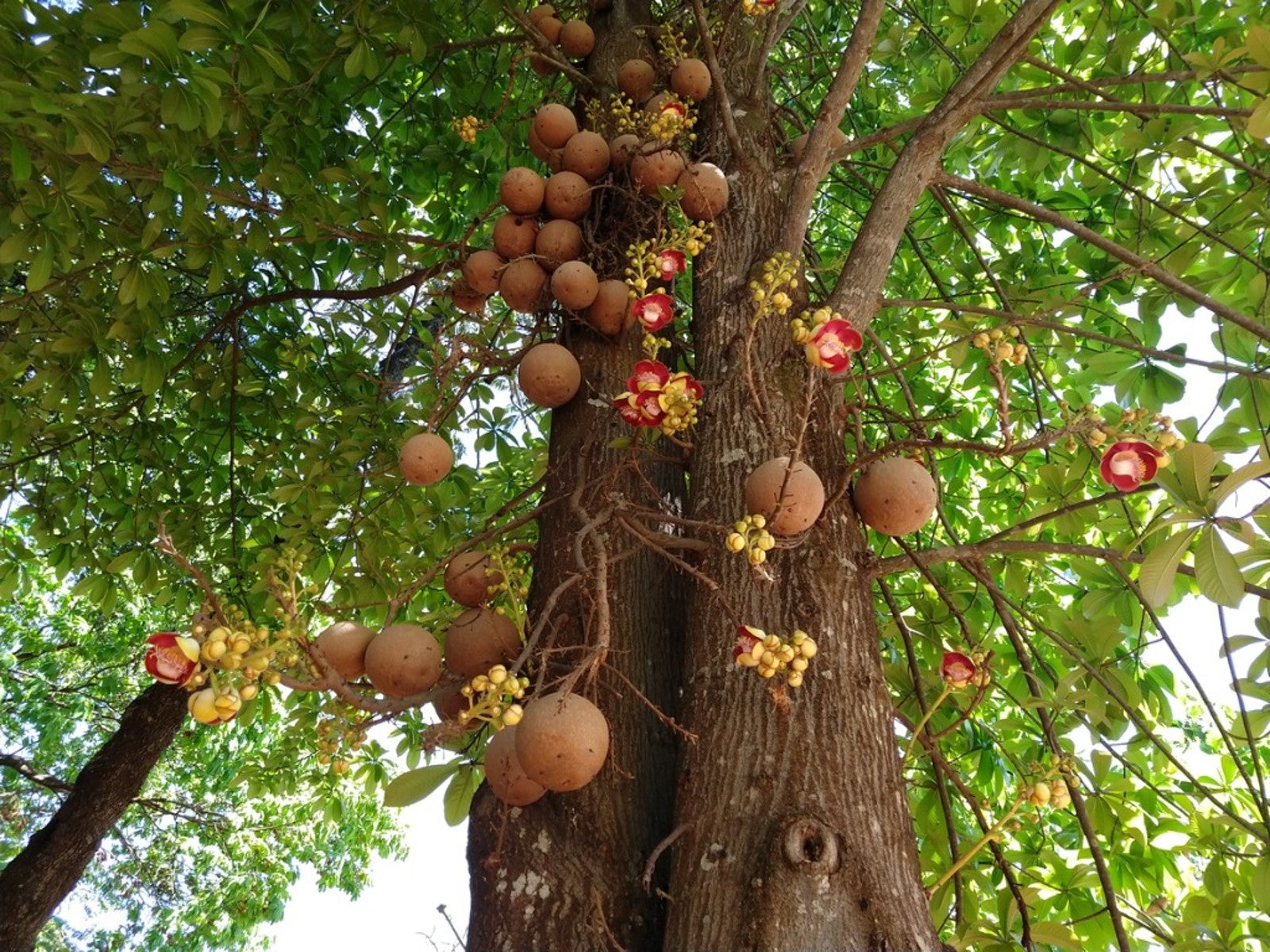Cannonball Tree Characteristics And Care


With a common name like the “cannonball tree,” you might expect something out of the ordinary, and you would be right. This tropical deciduous tree, with the botanical name of Couroupita guianensis, is definitely different from any tree you’ve ever seen.
Ready to hear more about the Couroupita guianensis? Read on to learn exactly how curious this tree is. You’ll understand better why all primary Cououpita guianensis uses are ornamental.
Cannonball Tree
The cannonball tree (Couroupita guianensis) is a deciduous tropical tree that hails from the rainforest regions of the Guianas Island. It is a soft-wooded relative of the Brazil nut family and grows to some 75 feet (25 m.) tall.
The first truly distinct thing about the cannonball tree is that its flowers and fruits grow from the trunk, not along the branches. They appear on thick, vine-like stems that grow directly from the tree trunk. The vines grow thick and fast on the lower parts of the tree trunks.
Couroupita Guianensis Flowering Season
The cannonball tree’s flowers are attractive. The large, rose-pink flowers have a strong and pleasant fragrance that is most powerful in the early mornings. Each one has six spreading petals encircling both fertile and sterile stamens and lives for one day only.
The pollinated flowers produce the fruits that give the Couroupita guianensis tree its common name. The fruits also grow on the vines. They develop over 18 months into large, round balls the same size as cannonballs. The fruits are woody and reddish brown, and, on windy days, they knock together creating a sound like a cannonade. When fruit is ripe, it falls from the tree and smashes into the ground with an explosive sound. Sometimes the fruit splits open, revealing the hundreds of seeds inside.
How to Grow Cannonball Tree
If you are wondering how to grow cannonball tree, first check your hardiness zone. Given the tropical home of these trees, it will be no surprise that they only thrive in USDA plant hardiness zones 11 and 12. They are also way too tall to grow as houseplants.
Sign up for the Gardening Know How newsletter today and receive a free copy of our e-book "How to Grow Delicious Tomatoes".
If you live in one of the warmest zones, it would be an intriguing addition to your landscape. Plant the tree in well-drained soil that is rich in organic content. Give it a site in full sun or part sun. Note that the tree will not survive a frost.

Teo Spengler is a master gardener and a docent at the San Francisco Botanical Garden, where she hosts public tours. She has studied horticulture and written about nature, trees, plants, and gardening for more than two decades, following a career as an attorney and legal writer. Her extended family includes some 30 houseplants and hundreds of outdoor plants, including 250 trees, which are her main passion. Spengler currently splits her life between San Francisco and the French Basque Country, though she was raised in Alaska, giving her experience of gardening in a range of climates.